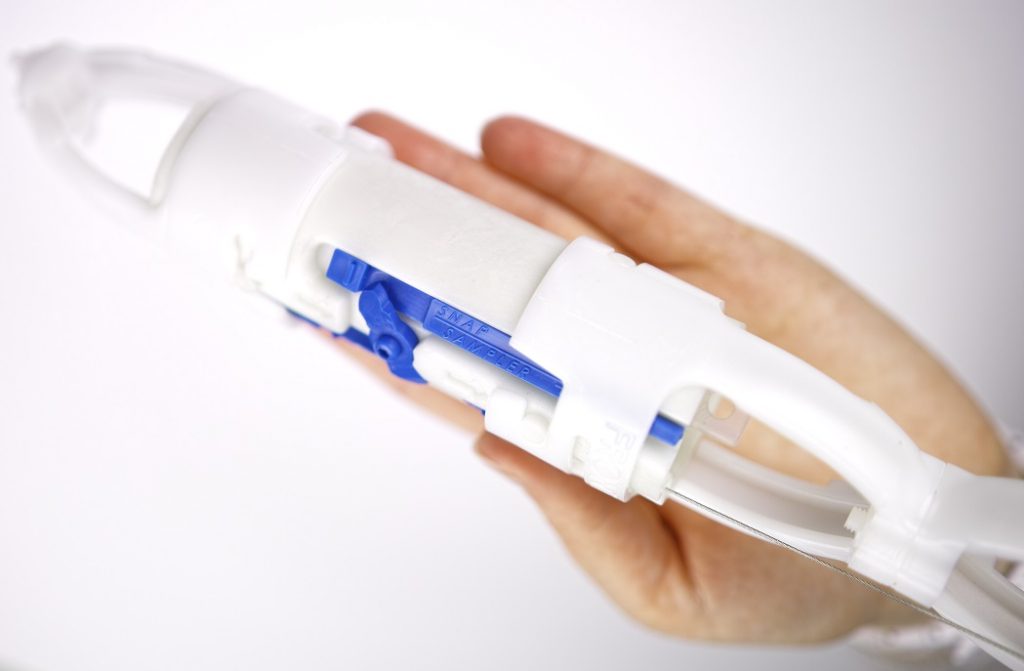

Ratifying the latest technique for Groundwater Monitoring

March 30, 2016
Has “passive” groundwater monitoring come across your radar?
Everyone knows that well purging is tedious and waste intensive. Low flow purging is better, but still takes time and generates waste water that needs to be handled and disposed of. Increasingly we are seeing a real alternative which claims to be able to deliver cost savings as well as more consistent, accurate results, acquired safely, quickly and cost effectively: Passive sampling.
Passive sampling is sampling a groundwater monitoring well using a device that is deployed in the well in advance to “passively” equilibrate with the screen-zone water. Is that possible? Can you just sample the “stagnant” well water? In a word…. ‘yes’, because screen-zone water is not stagnant, but rather it is live flowing formation water. A groundwater monitoring well is just a connected pore space in the subsurface, so it makes sense that water flowing through the aquifer is also flowing through the well screen. Residence in the well has been shown to have little or no impact on contaminant analytical results compared to purge-based sampling. The United States Geological Survey successfully introduced passive sampling using diffusion-based devices in the late 1990’s. Since that first introduction, several additional approaches were developed to follow the discovery that passive samples collected without purging compared well with purged results. This finding led to additional passive sampling approaches including sorption-based passive samplers and grab-type passive samplers—such as the Snap Sampler.
The Snap Sampler is a passive groundwater sampling device used as a cost-saving replacement technology for both volume-based and low flow purging and sampling.
What is the Snap Sampler?
The Snap Sampler is a unique device that utilises special bottles that “snap” closed to collect samples from a specific and repeatable position in the well screen. The bottles are removable from the Snap Sampler device and can be submitted to the analytical laboratory directly without exposing the sample at all. This feature can yield the most pristine sample possible without artifacts from purging or surface sample handling. It is really the ideal sample for most sampling situations and especially good for difficult conditions such as low yield wells.
How does the Snap Sampler work?
There are a few basic components to Snap Samplers. The “Snap Samplers” themselves are the devices that hold individual bottles and contain the mechanism to set both ends of the individual bottles open. Snap Samplers can be “stacked” in a series of up to six in a row. Different sampler types allow you to collect any combination of Snap VOC vials, 125ml and 350ml HDPE bottles. The bottles are removable and replaceable. The Snap Samplers and open bottles are lowered down a well with a trigger line which can be either a manual “pull” trigger or a pneumatic trigger. Using the device is simple and straightforward, so is easily repeatable by the same or different operators. You load bottles, set the “Snap” caps open, then lower down well. The Samplers are left to equilibrate – normally the full time between sampling events. When you return to the well, you activate the trigger by pulling on the manual line (<15m) or adding air pressure to the pneumatic line (>15m). Snap Samplers are retrieved and bottles prepared to submit to the laboratory. Very simple. No purging, no waste, sample immediately and quickly. To prepare for the next sampling event, new bottles are loaded into the Snap Sampler, Snap Caps set open and lowered back down well. All equipment is stored in the well so sampling logistics are exceedingly easy to maintain – you simply come to the site with replacement bottles and minimal equipment such as a water level meter and box for your collected samples.
Advantages
The main difference between Snap Sampling and purge sampling is the time it takes to collect samples. Typically, you can expect to improve efficiency by 2 to 3 times. If you currently sample 6 to 8 wells per day with purging, you can expect to collect 12-20 samples per day with the Snap Sampler. No purge waste handling also improves cost and logistical concerns. Data quality benefits can also impact your data analysis back at the office. Collecting samples in an identical way, at the exact same depth in the well every time, with little or no sample exposure when preparing samples at the surface avoids artifacts of sampling that can make your dataset “noisy” in the long term. If you avoid those artifacts, trend monitoring becomes easier. Better trend monitoring makes for quicker decisions about remedy effectiveness, attenuation rates or monitoring frequency requirements. All of these factors can have an impact on your bottom line.
Van Walt is the exclusive distributor of the Snap Sampler in the UK and Ireland.
Sandy Britt
ProHydro Inc
You might also be interested in...
Van Walt Guidelines for sampling for PFAS in Groundwater
November 13, 2024We need to make clear, that at the time of writing, there are no ISO or EN standards which deal with the sampling of groundwater for PFAS.
Read MoreSpot measurement v. continuous environmental monitoring
August 25, 2023Environmental monitoring has developed considerably over the years. From the time when a consultant went out monthly or quarterly with a dip tape to monitor the groundwater level in a borehole, wind forward...
Read MoreMeasuring Nitrates (NO3, NO3-N) in the field
June 20, 2023The interest in Nitrates is nothing new. One way or another we have been measuring them for half a century.
Read MoreVan Walt Environmental Equipment
A small selection of our environmental equipment